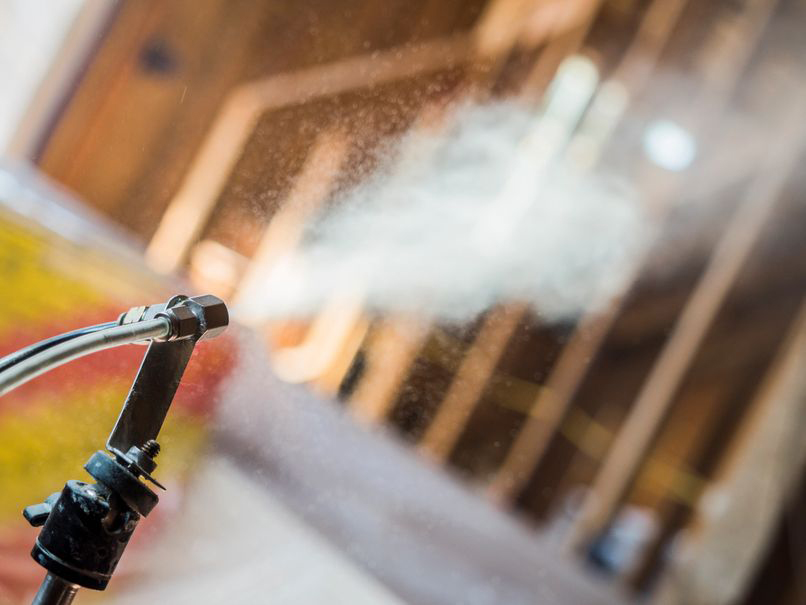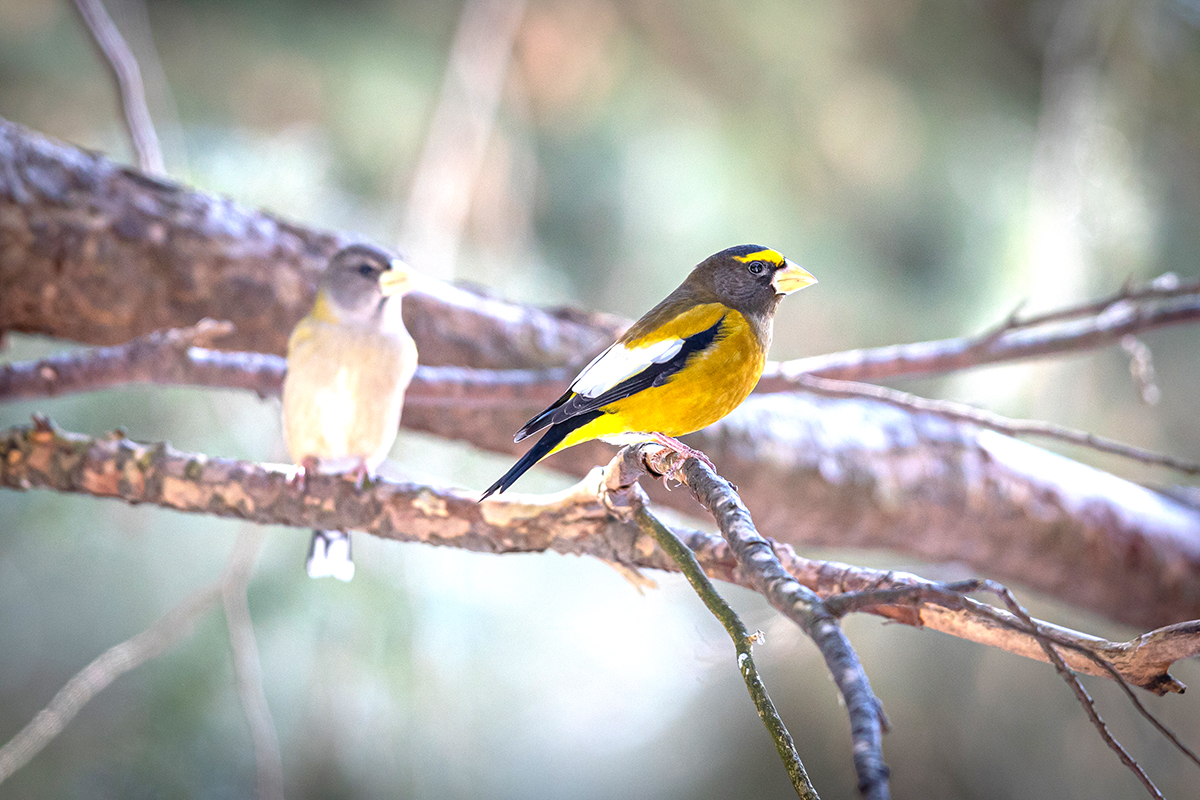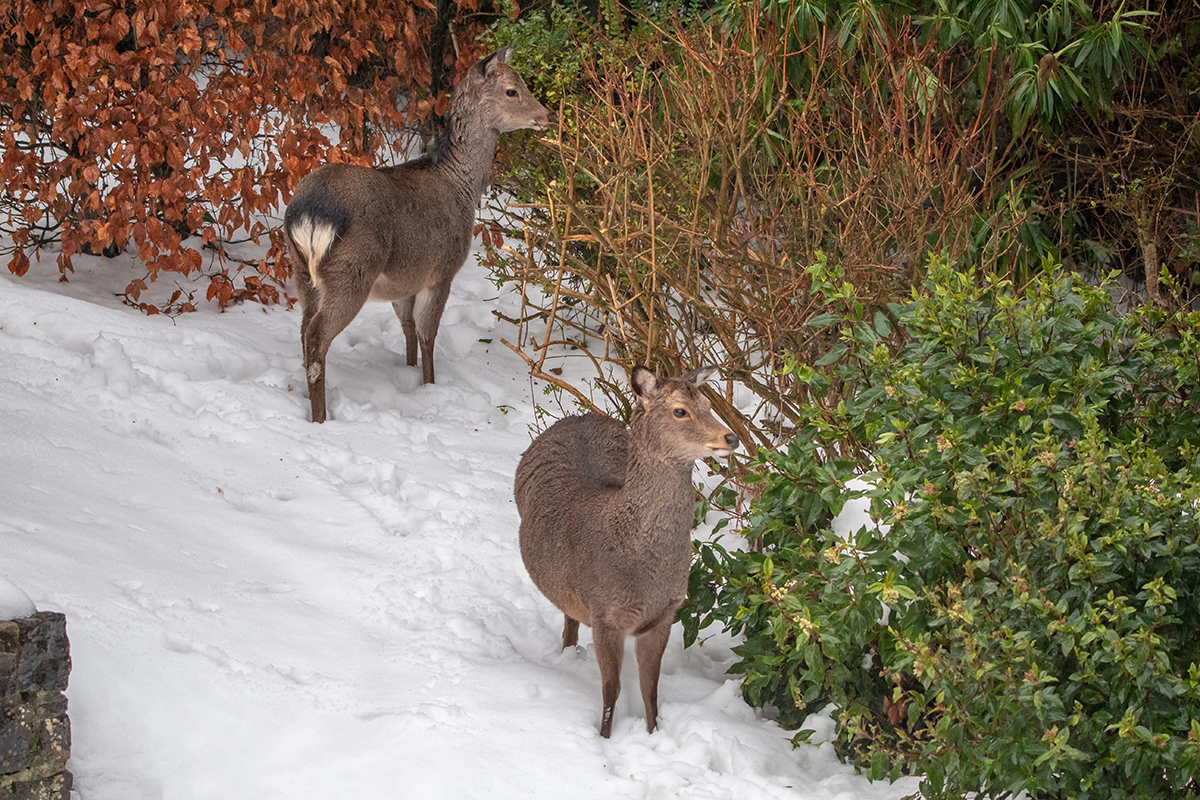WRITER | JULIE FORD
Hyper-what? Hypertufa troughs are manmade rugged, porous planters that allow plants to take center stage. They look like heavy concrete, but the combination of cement, peat, perlite, and water make them much lighter and easier to handle.
Hypertufa is an artificial substitute for “tufa,” a porous rock formed as a deposit in limestone springs or streams in various parts of the world. Easily carved, shaped, and drilled, tufa troughs were used in European gardens in previous centuries. As the popular troughs became scarce, gardeners created a base recipe to replicate the look: three parts cement, four parts peat, four parts perlite, and water to make the mix pliable. The sizes and shapes are as varied as the imagination.
Making a hypertufa trough is a great project for the family. Lake Michigan beach stones, Lake Superior agates, minerals from an old collection, even fossils like Petoskey stones can adorn the handmade planter. Just a word of caution: be sure to wear a mask when handling dry cement mix and use goggles and gloves to create the planter. When spring temperatures average 50 to 60 degrees Fahrenheit is an ideal time to prepare and mold the hypertufa. An online search for hypertufa how-to will result in many suggestions for the recipe and for forming the planter shapes. Be sure to include drainage holes in the bottom because although hypertufa is porous, it will not drain as much as needed to keep your plants healthy.
Once you have purchased or created your hypertufa trough, the fun continues with plant selection. Make sure you match the soil to the needs of the plants you buy. Here are several plants that grow beautifully in hypertufa troughs:
Dwarf Perennials
Hostas are a familiar shade-loving plant with spectacular foliage and spikey white or lavender flowers. Did you know there are miniature hosta varieties from one to ten inches in size that still produce beautiful flowers and leaf variations? Other small-size perennials include dwarf yarrow, low-growing phlox, dianthus, dwarf columbine, and dwarf Solomon’s seal, to name a few.
Alpine Plants
Alpines are native to rocky areas, often growing in crevices in harsh environments. Try saxifrage, a low-growing evergreen perennial that produces sweet little purple flowers in spring. The alpine anemone or alpine pasque flower is a squatty, hardy plant with cupped white flowers and a significant crown of yellow stamens. To add height, look for dwarf columbine that grows to a height of one foot instead of the typical three feet.
Succulents
Ever-popular hens and chicks and stonecrop varieties do well in a hypertufa trough. One simple, long-lasting, colorful arrangement is to blend portulaca — also known as moss rose — in and around hens and chicks and any other succulents you desire. Its blooms are vibrant pinks, oranges, yellows, and white and blend well with the varying heights of succulents.
Mosses
There is something soothing about soft, green moss, and a hypertufa trough is perfect for creating a woodland landscape indoors or out. Mosses require a damp environment and just a few hours of direct sunlight each day. Acidic soil with a pH between 5.0-6.0 is ideal. Use soil test strips to determine pH and keep the moss moist using a spray bottle. To add more interest to the planting, work in dwarf ferns that tolerate the same soil conditions as mosses. The best part about a moss-filled hypertufa is that mosses can often be foraged from your yard.
Early Floral
One of the first annuals available in spring is the viola or johnny jump up, the tiny version of a tri-colored pansy. They can tolerate cool, early spring temps and can last all summer if situated in part shade. They’re readily available, easy to plant, and will give instant cheer to the front porch.
Herbs
Many herbs can be combined in one hypertufa trough. Parsley, sage, and thyme make a beautiful, tasty arrangement. Culinary thyme varieties include French, English, and lemon, and there are several culinary varieties of sage.
Mints and lemon balm are best kept in their own containers as they grow very quickly. If one of the runners grows outside the trough and into a neighboring patch of earth, you will soon be overrun with these plants!
Hypertufa troughs can be as simply shaped as a ball with a small flowering clump of royal blue lobelia, adding interest to an otherwise plain area. They can also be kitchen sink-sized tubs holding variegated coleus and varieties of begonias to make a grand statement. The combinations are endless, and the time spent with family to create both troughs and arrangements is a great way to welcome spring.








